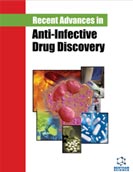Abstract
Background: The genetic diversity in HIV-1 genes affects viral pathogenesis in HIV-1 positive patients. Accessory genes of HIV-1, including vpu, are reported to play a critical role in HIV pathogenesis and disease progression. Vpu has a crucial role in CD4 degradation and virus release. The sequence heterogeneity in the vpu gene may affect disease progression in patients, therefore, the current study was undertaken to identify the role of vpu in patients defined as rapid progressors.
Objective: The objective of the study was to identify the viral determinants present on vpu that may be important in disease progression in rapid progressors.
Methods: Blood samples were collected from 13 rapid progressors. DNA was isolated from PBMCs and vpu was amplified using nested PCR. Both strands of the gene were sequenced using an automated DNA Sequencer. The characterization and analysis of vpu was done using various bioinformatics tools.
Results: The analysis revealed that all sequences had intact ORF and sequence heterogeneity was present across all sequences and distributed all over the gene. The synonymous substitutions, however, were higher than nonsynonymous substitutions. The phylogenetic tree analysis showed an evolutionary relationship with previously published Indian subtype C sequences. Comparatively, the cytoplasmic tail(77 – 86) showed the highest degree of variability in these sequences as determined by Entropy- one tool.
Conclusion: The study showed that due to the robust nature of the protein, the biological activity of the protein was intact and sequence heterogeneity may promote disease progression in the study population.
Graphical Abstract
[http://dx.doi.org/10.1126/science.6189183] [PMID: 6189183]
[http://dx.doi.org/10.1126/science.6200936] [PMID: 6200936]
[http://dx.doi.org/10.1126/science.6200935] [PMID: 6200935]
[http://dx.doi.org/10.1093/infdis/163.5.959] [PMID: 1673465]
[http://dx.doi.org/10.1097/00002030-199309000-00002] [PMID: 8105806]
[http://dx.doi.org/10.1089/aid.1994.10.883] [PMID: 7811537]
[http://dx.doi.org/10.1056/NEJM199501263320401] [PMID: 7808485]
[http://dx.doi.org/10.1056/NEJM199501263320402] [PMID: 7808486]
[http://dx.doi.org/10.1126/science.271.5247.324] [PMID: 8553066]
[http://dx.doi.org/10.1056/NEJM199602153340703] [PMID: 8552144]
[http://dx.doi.org/10.1126/science.272.5265.1124] [PMID: 8638155]
[http://dx.doi.org/10.1126/science.272.5265.1167] [PMID: 8638160]
[http://dx.doi.org/10.7326/0003-4819-118-9-199305010-00004] [PMID: 8096374]
[http://dx.doi.org/10.1128/JVI.73.7.5497-5508.1999] [PMID: 10364298]
[http://dx.doi.org/10.4049/jimmunol.170.4.1925] [PMID: 12574360]
[http://dx.doi.org/10.1128/jvi.63.9.3784-3791.1989] [PMID: 2788224]
[http://dx.doi.org/10.1128/mBio.01920-21] [PMID: 34425695]
[http://dx.doi.org/10.1128/JVI.01999-19] [PMID: 31941771]
[http://dx.doi.org/10.1007/s00705-014-2026-2] [PMID: 24748005]
[http://dx.doi.org/10.1128/JCM.38.7.2468-2474.2000] [PMID: 10878027]
[http://dx.doi.org/10.1093/bioinformatics/btv195] [PMID: 25851949]
[http://dx.doi.org/10.1371/journal.pone.0046688] [PMID: 23056405]
[http://dx.doi.org/10.1145/2382936.2382989]] [PMID: 15718475]
[http://dx.doi.org/10.1089/aid.2006.22.1206] [PMID: 17209762]
[PMID: 8336541]
[http://dx.doi.org/10.1093/molbev/msw054] [PMID: 27004904]
[http://dx.doi.org/10.1089/08892220050075363] [PMID: 10933625]
[http://dx.doi.org/10.1128/jvi.66.12.7193-7200.1992] [PMID: 1433512]
[http://dx.doi.org/10.1128/jvi.68.4.2260-2271.1994] [PMID: 8139011]
[http://dx.doi.org/10.1073/pnas.86.13.5163] [PMID: 2472639]
[http://dx.doi.org/10.1128/jvi.64.2.621-629.1990] [PMID: 2404139]
[http://dx.doi.org/10.1182/blood-2011-01-333427] [PMID: 21521785]
[http://dx.doi.org/10.2174/157016212800792513] [PMID: 22524181]
[http://dx.doi.org/10.1182/blood-2009-09-243667] [PMID: 20530791]
[http://dx.doi.org/10.1016/j.celrep.2014.05.015] [PMID: 24910430]
[http://dx.doi.org/10.1128/JVI.01678-08] [PMID: 18945774]
[http://dx.doi.org/10.1016/j.micinf.2008.07.006] [PMID: 18672082]
[http://dx.doi.org/10.1128/jvi.71.6.4452-4460.1997] [PMID: 9151836]
[http://dx.doi.org/10.1016/S0005-2736(01)00332-7] [PMID: 11406106]
[http://dx.doi.org/10.1016/S0014-5793(03)00782-8] [PMID: 12972150]
[http://dx.doi.org/10.1002/prot.21642] [PMID: 17910056]
[http://dx.doi.org/10.1371/journal.pone.0112983] [PMID: 25392993]
[http://dx.doi.org/10.1146/annurev.biochem.72.121801.161800] [PMID: 12651740]
[http://dx.doi.org/10.1016/j.virol.2008.05.022] [PMID: 18579178]
[http://dx.doi.org/10.1371/journal.ppat.0030104] [PMID: 17676996]





















